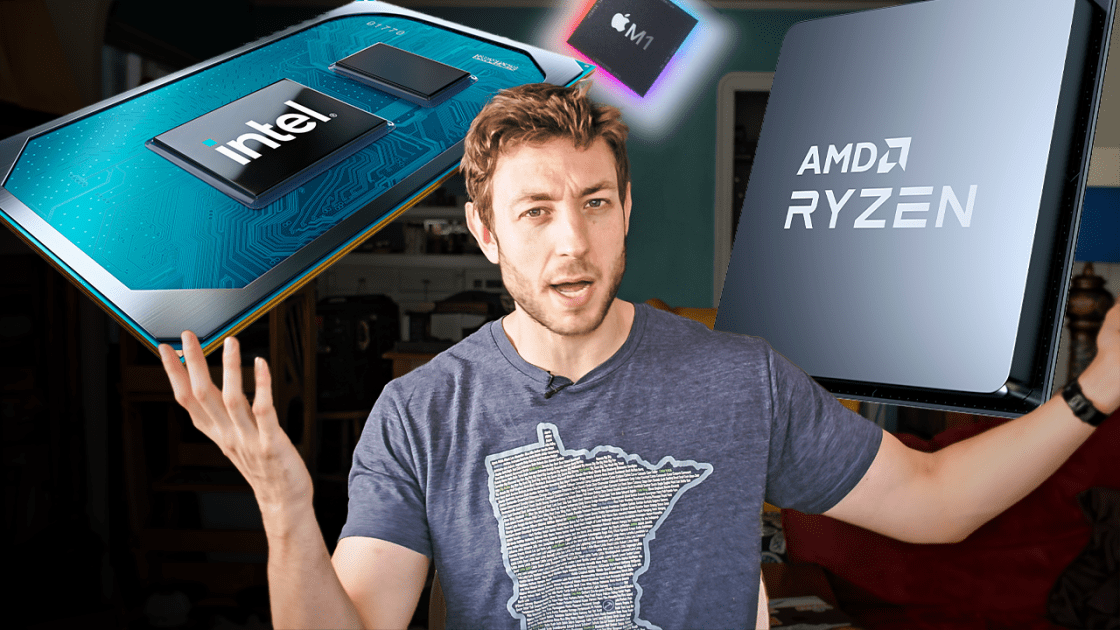
In this episode of our explainer show Upscaled, we took a look back at the year in CPUs. From one perspective 2020 feels like the new normal for CPUs. Intel put out another high-end chip, 10th-gen “Comet Lake”, which added a few cores but is still based on its aging 14nm transistor design, and AMD countered with Zen 3, an improved version of its desktop architecture that now goes up to 16 cores. This is the same pattern we’ve seen for a few years, with almost no surprises: the 10-core i9-10900k is impressively fast, but not that different from the 8-core 9900K, and we already got 16 core AMD chips last year with the 3950.
But look a little closer, and there’s been some impressive news in 2020. While Zen 3 didn’t increase core counts or clock speeds dramatically, it did deliver a big boost in instructions per-clock without increasing power consumption. After the disastrous CPU designs of the 2010s that nearly bankrupted AMD, part of me has been waiting for something to go wrong, for a new Zen CPU to underperform or come half-baked, but Zen 3 feels like it proves AMD knows what it’s doing. These chips are pricy, but blazingly fast (we think the 16-core Ryzen 9 5950X is overkill for most, but probably the best chip you can get for content creation), and they’re only leaving us feeling more excited for Zen 4, when AMD is likely to move to a redesigned motherboard socket, new manufacturing process, and high-speed DDR5 memory support all in the same generation. Just don’t hold your breath, Zen 4 may not arrive til 2022.
For Intel, while Comet Lake may not be terribly exciting, Intel’s 2020 mobile chips are a showcase for its new architectures and manufacturing. 2020 finally saw the wide release of 10th gen “Ice Lake” laptop chips, though they technically premiered in 2020. This chips were pretty efficient, but were limited by slow clock speeds that made them a little underwhelming when it came to performance. Intel’s 2020 design, Tiger Lake, or “11th gen” fixed a lot of that, with faster speeds and a massively upgraded GPU. Tiger Lake powered ultraportables like the XPS 13 are capable of some halfway decent 1080p gaming, at least in titles like Fortnite and Overwatch.
It’s not quite PC technology, but Apple has also stirred things up with the M1 chips. Ditching Intel for an in-house design, the M1 is based on Apple’s iPhone and iPad chips, and looks to be seriously fast, while only using a few watts of over. Maybe most impressively, Apple may be cooking up new designs with as many as eight times the CPU and GPU cores in the M1. Between these chips and some of the first RISC-V linux systems starting to ship, the next few years may become a lot more complicated than Intel versus AMD.
https://ift.tt/38KI71y
Technology

No comments:
Post a Comment